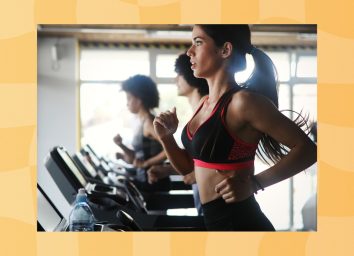Walking Mistakes You Shouldn't Make After 60, Say Walking Experts
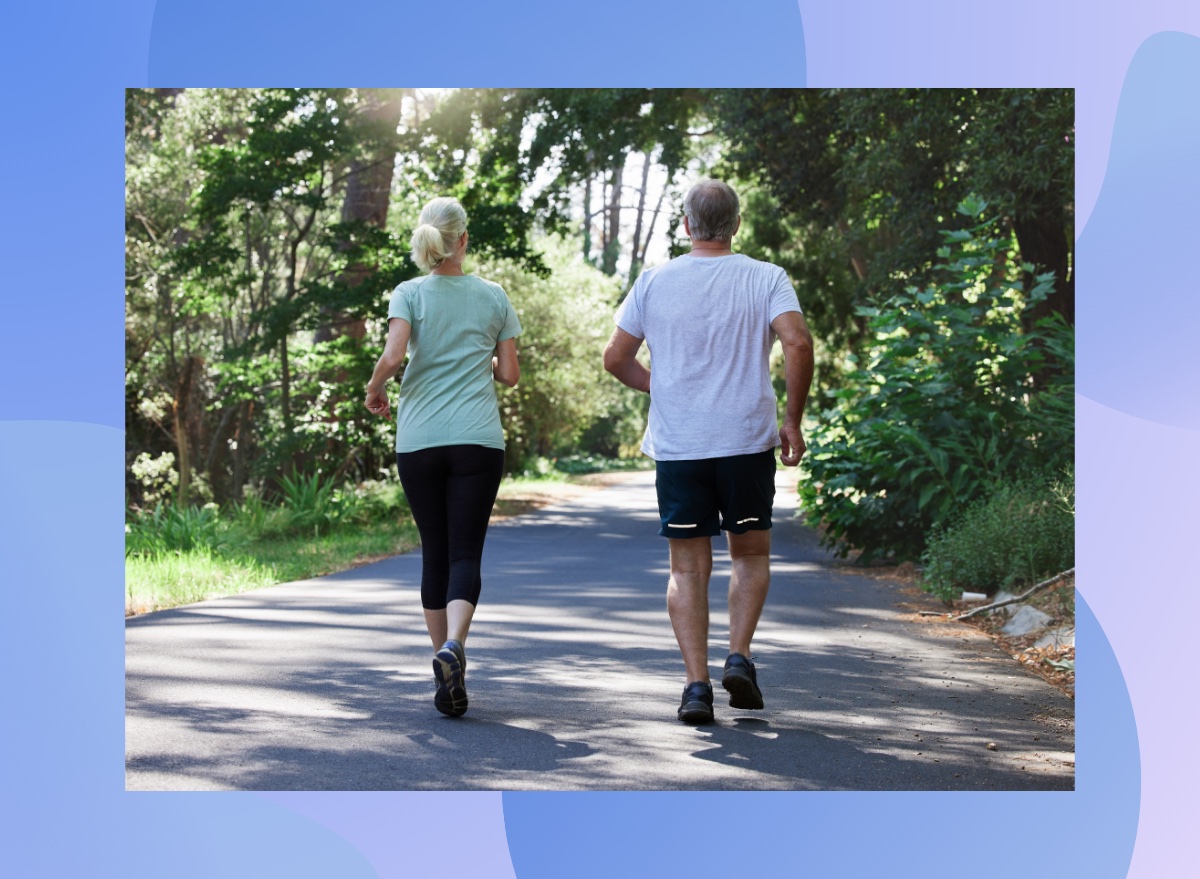
According to physical therapist Damien Powell, PT, when a healthy young adult goes out for a brisk walk, the locomotive power in their lower body is evenly distributed across their main joints: the hip joint supplies 33% of the power, the knee 33% of the power, and the ankle the exact same amount. However, an elderly person walking at the same speed? They will likely experience a "redistribution" of those powers, largely driven by issues involving the Achilles tendon and the fact that older people, by the time they reach their late 60s and beyond, have experienced a profound loss of muscle mass in their legs.
"Rough estimates are the elderly propulsive power is the hip joint provides approximately 74% [of the power], the knee 13%, and ankle 12%," he says.
In other words, if you walk for exercise in your older years, you may not realize that your body behaves differently when you walk. As a result, you'll find that you inevitably walk at slower speeds, you walk with an inefficient gait, and you may walk with less-than-ideal posture. The kinetic chain is disrupted, and your walk overall becomes less coordinated. If you throw in issues such as osteoarthritis, the pain you experience while walking will compound.
This is why, if you're getting older, walking experts will tell you that you need to approach your exercise walks differently than you did when you were younger—for your safety, for your mobility, for the quality of your exercise, and even for adding years to your life. You may even find that you need to perform some specific exercises that will help you become a better and more efficient walker.
With all of this in mind, we researched the latest science—and reached out to some top experts—to compile a short list of the things that older walkers should avoid doing while walking for exercise. Read on to learn what they are. And if you love to walk, make sure you're aware of The Secret Cult Walking Shoe That Walkers Everywhere Are Totally Obsessed With.
You're Not Doing Proper Exercises and Stretching
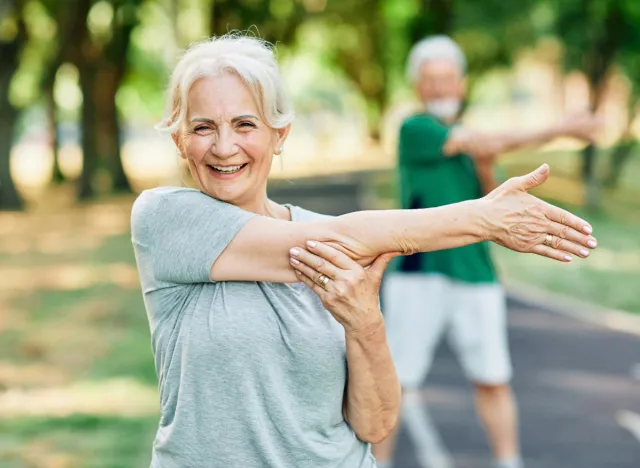
As Powell mentioned, your body will start to walk differently due to physiological changes resulting from aging. There are exercises you can do to help offset these changes that will make you a better and more efficient walker.
According to a study published in the journal Current Translational Geriatrics and Experimental Gerontology Reports, there are "impairment-based interventions" that are scientifically proven to help older people walk better. They include resistance exercises, which include repeated chair stands; increased stretching of the dorsi-flexors (essentially your ankle) for better range of motion; aerobic conditioning exercises, such as riding on a stationary bike; and "progressive ambulation training." For the latter, the study recommends "repeated practice of push-offs or weight-shifting of the center of mass." (In other words, you should do balance-focused exercises, such as standing on one leg.)
According to Lisa Herrington, an ASCM certified trainer and founder of FIT House Davis, everyone who walks for exercise should stretch their quads, warm up their backs, perform hip stretches, loosen their hamstrings, and stretch out their feet. This is doubly true for older people, she says. And for some workouts you can try, don't miss The Walking Workouts That Will Help You Get Lean, Says Top Trainer.
You're Not Walking to Music

Research has shown that walking speed is one of many predictors of early death. Assuming you're physically up to it, research has shown that older walkers may benefit from walking to music. According to a study published in the Journal of Physiotherapy, stroke survivors who walked to music experienced much faster walking speeds, better stride length, and better "cadence and symmetry." For more great exercise advice, see here for The One Secret Exercise Trick That's So Easy You Won't Believe it Works.
You're Using Improper Form
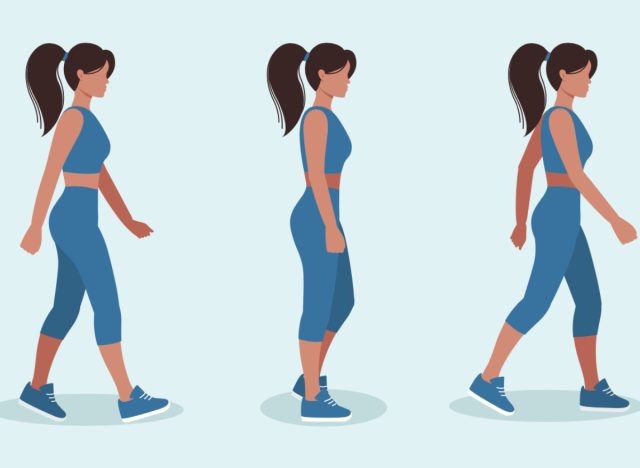
Just because walking comes naturally to us as bipedal mammals doesn't mean we're all necessarily performing the movement optimally, which is especially true for seniors. When you walk, you should keep your head in the proper position. "Think of your neck as part of your spine as a whole rather than a separate entity and try to increase the space between your vertebrae, expanding it like the bellows of an accordion," advise the experts at Bristol Nordic Walking. To do so, imagine that you're lengthening your spine "right up into your head." Keep your chin level to the ground. If you need to look down, turn your eyes down—not your whole head.
You should roll your feet on the ground and not land with a smack. "To be a better walker, your heel should strike the ground first, then roll to the ball, then push off the big toe," says Joe Vega, C.S.C.S., the founder of The Vega Method.
You should keep your shoulders back and down. "Your shoulders will be alternating pushing and pulling motions generating momentum for you to progress forward," says Vega. To maximize the benefits of walking, keep your shoulders relaxed, pulled back, and down. To ensure you're keeping them there, engage in routine "shoulder shrugs"—before your walk to loosen up and during your walk when you feel your posture starting to break down.
You should use your arms correctly, and that means bending them at the elbow, and you should take shorter, quicker steps so that you don't overstride. "Shorter, quicker steps are the key to going faster," write Leslie Bonci, MPH, RD, CSSD, LDN, and Michele Stanten, in the book Walk Your Butt Off!
You're Not Taking Safety Precautions When You Go Out
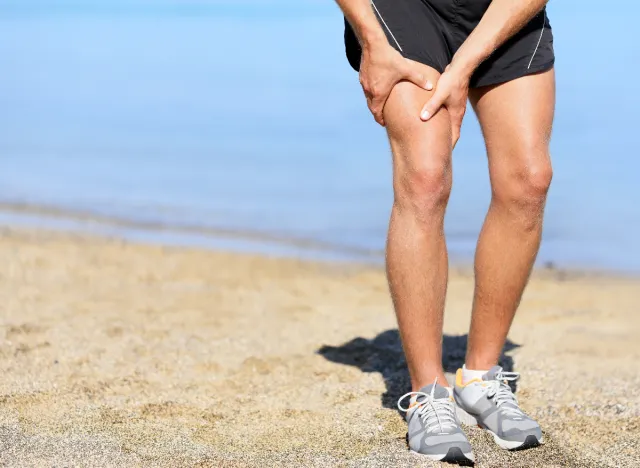
It's simply a fact that if you're older, you're more susceptible to falls and injury. "It's really important that seniors have a charged cell phone with them when they are walking," says Jeanette DePatie, CPT, author of The Fat Chick Works Out! and founder of Everybody Can Exercise. "Also, seniors who have hearing or eyesight challenges should probably avoid walking at night and crossing very busy intersections if possible."
She advises you to wear an ID bracelet, which can include your any medical conditions and contact numbers. "Weather can be an issue" as well, she says. "Remember, exercise is a lot more difficult when it's hot out, and seniors are sometimes more susceptible to overheating, syncope, heat cramps, heat exhaustion and heat stroke. When it's super hot, you may want to think about taking your walk somewhere air-conditioned like the museum or the mall."
You're Wearing Overly Flexible Shoes
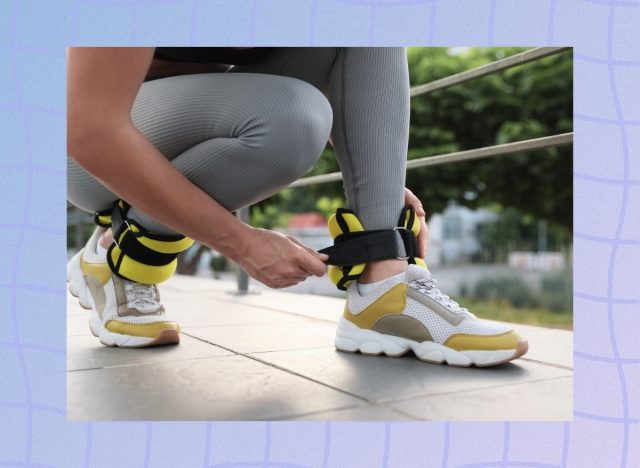
Walking experts will tell you that you should get fitted for you walking shoes just as runners get fitted for theirs—at a store where you can test them on a treadmill for comfort and support. But if you're getting older and you may be suffering from the effects of osteoarthritis, otherwise known as "wear-and-tear" arthritis—which according to the Arthritis Foundation, includes roughly 28 million people in the United States—you'd be wise to get a shoe with more support.
A new study published this year in the Annals of Internal Medicine sought to pinpoint which shoes are best for aging walkers who suffer from knee OA, and they found that those who wore "stable, supportive shoes" over the course of six months were far superior than "flat and flexible" shoes.
"Evidence did show a between-group difference in change in pain favoring stable supportive shoes," concluded the study. "Improvements in knee-related quality of life and ipsilateral hip pain favored stable supportive shoes." What's more, the study found that those who wore the more flexible shoes were at double the risk of developing foot and ankle pain compared to the group that wore shoes with greater stability.
You're Carrying Your Purse—or Weights—While Exercising
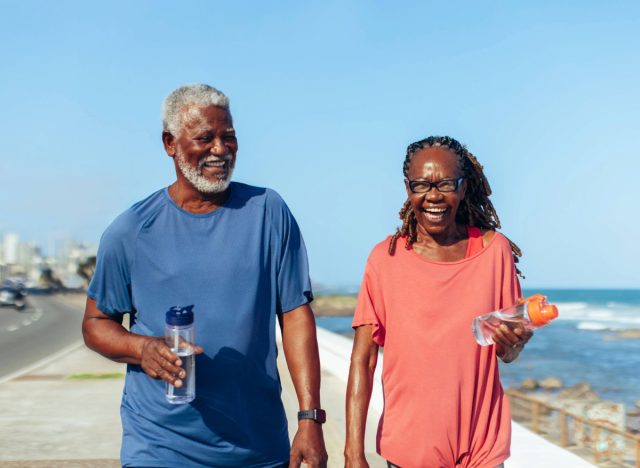
According to DePatie, if you need to bring some things with you, don't bring it in anything with a single-shoulder strap. "Don't carry a purse," she advises. "Purses tend to pull you over to one side and throw off your posture. [If anything,] bust out your fanny pack. Also try not to carry your water bottles—or hand weights—for the same reason." And for more reasons to get walking, see here for What Walking for Just 20 Minutes Does to Your Body, According to Science.


